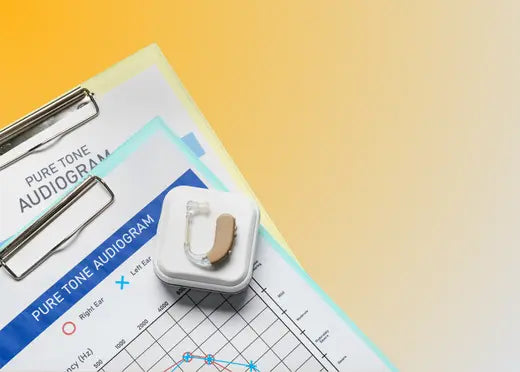Find out what misophonia is, its symptoms, its impact on daily life, and technological solutions such as adapted listening assistants.
Definition and symptoms of misophonia
What exactly is misophonia?
Misophonia is a neurological disorder characterized by an intense emotional response to specific sounds, often seemingly innocuous to the general population. This can range from irritation to anxiety or anger.
The most common trigger sounds
Chewing sounds, sniffing, pen clicks, and even heavy breathing are commonly reported as triggers. Each person with misophonia has their own unique sensitivities.
Typical physiological and emotional reactions
A person with misophonia may experience a rapid surge of stress, irritation, and even panic. These reactions are often uncontrollable.
Prevalence and medical recognition
Although little known, misophonia is increasingly being studied. It is not yet officially recognized as a psychiatric disorder, but it is the subject of serious clinical research.
Difference from hyperacusis and other hearing disorders
Misophonia vs. Hyperacusis: Don't Confuse Them
Hyperacusis is a hypersensitivity to sound intensity in general. Misophonia, on the other hand, concerns specific sounds perceived as aggressive or intrusive.
Misophonia vs. tinnitus: distinct mechanisms
Tinnitus is a phantom sound heard in the absence of an external source. Misophonia, on the other hand, responds to real sounds.
Frequent comorbidities with other disorders
Studies show a higher frequency of anxiety disorders, ADHD or OCD in people with misophonia.
Impacts on daily life
Social and relational consequences
Misophonia can lead to social isolation, family conflict, or distress in work or school environments.
Effects on mental health and well-being
Chronic reactions to certain sounds can cause emotional exhaustion, chronic stress, and even sleep disturbances.
Avoidance strategies and their limits
Many misophone people implement avoidance strategies: wearing headphones, isolation, shift work, etc., which can unfortunately harm their quality of life.
Recognized therapeutic approaches
Adapted cognitive behavioral therapies
CBT allows you to gradually desensitize the emotional reaction and learn to better manage the anxiety generated by triggering sounds.
Desensitization and exposure therapies
These therapies rely on controlled and progressive exposure to sounds to reduce the automatic emotional reaction.
Promising complementary approaches
Hypnosis, mindfulness meditation or sophrology are sometimes used as a complement to reduce the general level of stress.
Assistive technologies for people with misophones
Adaptive filtering of trigger sounds
Some electronic devices today can filter out the precise frequencies of sounds deemed unbearable by the user.
Sound Masking and Sound Therapy
White or ambient noise can be used to cover up triggering sounds and reduce their emotional impact.
The Spokeo approach: personalization and control
Spokeo, an innovative listening assistant , enables targeted listening thanks to its smart microphone. It reduces exposure to ambient noise by picking up only the speaker's voice. Thanks to its dual sound conduction technology (air and bone), it bypasses hearing obstructions and limits the intrusive effect of certain sounds. A practical solution for people with misophonia seeking auditory serenity.
Testimonials from users suffering from misophonia
Many misophone users report a real sense of relief in their daily lives with Spokeo. Less stress, more comfort during conversations, and a real regain of control over their audio environment.













